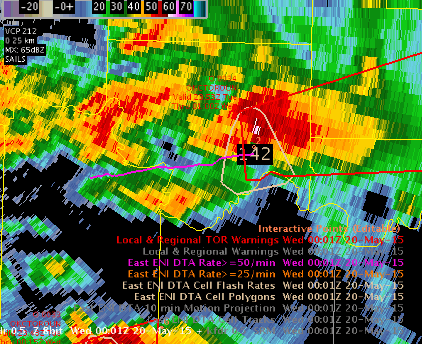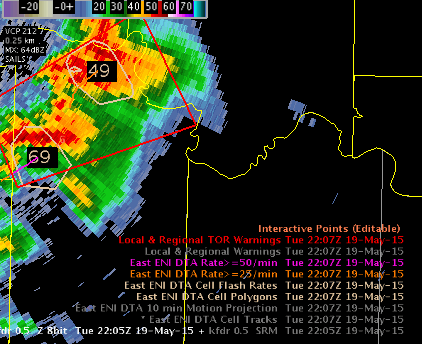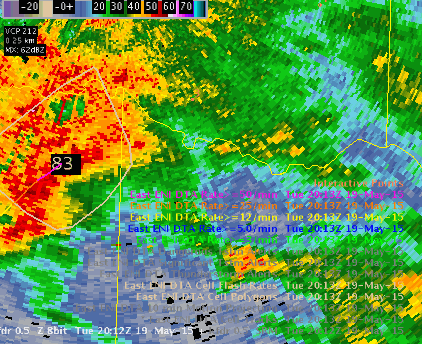I’ve noticed a few cases today where the Lightning Jump Algorithm and ENI polygons and time series data do not line up as I might have imagined. Lightning jump is based on radar data whereas the ENI polygons and time series data use the Earth Network lightning data. Beam blockage due to the terrain in the Pocatello CWA may have affected the radar data going into the lightning jump which may account for some of the differences.
In the example below, the lightning jump algorithm shows a value of 6 sigma at 2301Z whereas the ENI time series shows only a relatively small increase in lightning activity at this time.


















